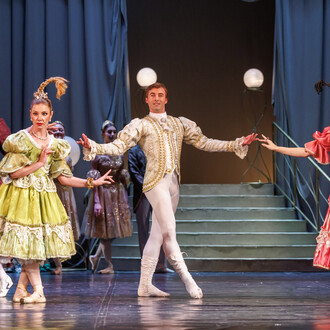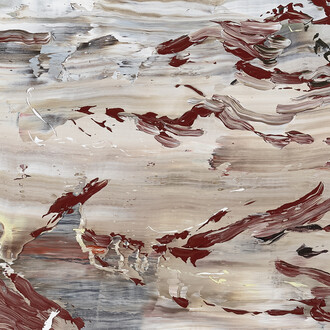On Thursday, 13 November 2025, Amy-d Arte Spazio Milano (Brera District) presents Simulacrum - Breath of haze, a solo show by Japanese artist Yuji Mizuta (Shizuoka, 1976 – based in Tokyo), curated by Raffaella Nobili in her dual role as co-gallerist together with Anna d'Ambrosio.
The new economArt project by the Milanese research gallery attempts to trace some guidelines in Japanese performance art through the work of an artist such as Mizuta, who turns a physical experience into a nostalgic simulacrum, thus preserving a vanishing trace of ever-changing life.
For the first time on display in Italy, Yuji Mizuta is an artist rarely seen in Europe.
His work engenders a variety of techniques, including drawing, painting, collage, weaving, dyeing, embroidery, printing and video. The motifs emerging from his delicate and precise conceptions changes on fabric and paper according to the various underlying stories. As an artist, he has created several public artworks and held solo exhibitions in Japan and abroad, including Tokyo, Copenhagen and Singapore. In recent years, in addition to using textiles as a means of expression, he has experimented with media such as video and dialogue-based performances.
Ranging from painting to drawing, photography to sound, poetry to textiles (embroidery) and site-specific installations such as Hakama, Haori, Kokoro/Inside (silk-screen print and hand embroidery on fabric) and the video installation Necromancy – all part of DemolitionPurificationLove_Magic from 2022 – Mizuta brings together the practices of the artists within the genealogy of avant-garde expression in Japan, creating multi-layered dialogues between the works on display and the reflection on the changing self, combining reality and imagination, drawing on his fetishistic love of textiles – a semantic threshold in itself, which has become the focus of his work. On display at Amy-d Arte Spazio Milano are videos from the series Mie/My face up to age 48 (2025) and Simulacrum_Sensuous (2025), a video and installation with utsuwa and seven monitors; silk-screen prints, embroidery, and hand-stitched embroidery on cotton from the 2019 series Talisman; mixed media paintings on fabric such as Serpentine (2025) and Fudoki (2025); silkscreen print and hand weave on original frame such as The changeling (2025) and Ode to a nightingale (2025).
“It emerges from the mist, takes shape and then returns to it. Contours arise, solidify and dissolve, while existence is constantly renewed in a state of continuous fluctuation,” writes the artist. “The feeling of oboroge – “misty” or “vague” – is, for me, a deeply impressionistic visual image.”
With ‘Simulacrum’, Yuji Mizuta encapsulates the common thread that unites the body of work he has created over the last few years, focusing on image, appearance, phantom and illusion. His works revolve around an interdisciplinary reflection on space, time and existence. Mizuta positions his practice as a metaphysical investigation into "what existence is" and the individual's ability to connect (anthropologically) in the name of a Jungian collective unconscious, transcending the boundaries of different and distant worlds, exploring the fluid nature of memory, presenting traces of reality and their reprocessed refractions – simulacra – through a plurality of languages. [...]. This idea also resonates with the Japanese belief in Yaoyorozu no Kami, the concept for which divinity resides in all things: mountains, rivers, wind, stones, fire, rice and ancestors.
Such sensitivity, which perceives the sacred in nature, can be seen as an expression of an archetype, of mankind's innate reverence for the natural world.
Fetishism, deep affection, joy, jealousy and pain, desire and queerness: everything is expressed with raw vulnerability, others with milder emotions. These intimate elements are never made explicit but can be sensed, like the floating trail of incense, evoking memories and bodily presences with subtle intensity [...].
When confronted with these fragments, viewers may feel their own memories and emotions reawakening and taking on new life. Memory is never the same; it is constantly being rewritten, as the boundaries between past and present dissolve. We live in a constant shift between instability and fixation.
Through visual, auditory and spatial experiences, the exhibition speaks of uncertainty, distortion and transformation of memory. The solo exhibition presents a coherent and substantial body of work, displaying the artist's growth as he brings forth a repertoire of mature and diverse images and allegories, yet always recognizable in style and poetics.
The exhibition is complemented by Simulacro_Guardian of impermanence, a critical essay by gallerist Raffaella Nobili, who is a strategic partner in this new exhibition venture.
















